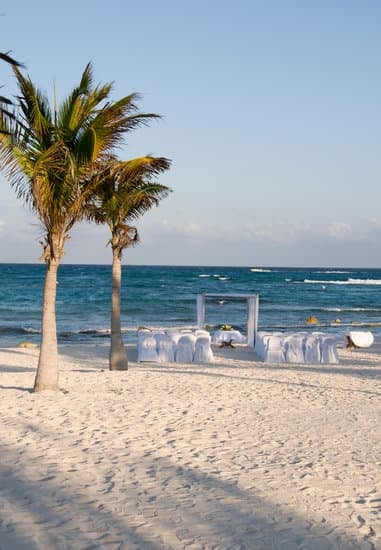Are you planning a wedding and looking for ways to make the reception more lively and exciting? One essential element that can truly elevate the celebration is a portable dance floor. In this article, we will guide you on how to build a portable dance floor for a wedding and discuss its significance in creating memorable moments for the newlyweds and their guests.
A portable dance floor is not just a place for people to dance; it also serves as a focal point of entertainment during a wedding reception. Whether it’s for the first dance or an all-night party, having a designated area for dancing can enhance the overall atmosphere of the event. Additionally, it provides guests with an opportunity to let loose, move their bodies, and create cherished memories with the bride and groom.
There are numerous benefits to having a portable dance floor at a wedding. It allows you to customize the space according to your preferences, ensuring that the size and style of the dance floor align with your vision for the day. Moreover, by building your own dance floor, you have complete control over its quality and sturdiness, providing peace of mind knowing that it can safely accommodate your guests throughout the celebration.
Planning and Preparation
When it comes to planning a wedding, one of the most important considerations is creating a space for guests to dance and celebrate. A portable dance floor is an essential element for any wedding, as it provides a designated area for guests to let loose and enjoy the festivities. Whether the wedding is held indoors or outdoors, having a portable dance floor ensures that everyone can join in on the fun without worrying about uneven surfaces or potential hazards.
Before embarking on the construction of a portable dance floor for a wedding, it’s crucial to carefully plan and prepare for the project. The first step is to assess the available space at the venue where the dance floor will be placed.
This will help determine the size of the dance floor needed to accommodate the number of guests expected at the wedding. Additionally, considering factors such as whether the wedding will take place indoors or outdoors, as well as any specific layout requirements, will further inform the planning process.
Once the space has been evaluated and dimensions have been determined, setting a budget for constructing the portable dance floor is essential. Allocating funds for materials and construction will help keep costs in check and ensure that all necessary components are accounted for. By carefully planning and preparing for building a portable dance floor, couples can create a designated area that enhances their wedding celebration and leaves a lasting impression on their guests.
- Assessing available space at venue
- Calculating size needed based on number of guests
- Setting budget for construction
Materials Needed
To build a portable dance floor for a wedding, you will need a variety of materials to ensure the construction is sturdy and durable. The first step in gathering materials is creating a list of everything needed for the project.
Some essential materials you will need include plywood sheets, vinyl or laminate flooring, screws, nails, wood glue, and foam padding. Additionally, you may also require tools such as a saw, drill, measuring tape, and paint if you plan to add any decorative elements to the dance floor.
Once you have your list of materials prepared, the next step is to gather them from reliable sources. You can find plywood sheets and other building materials at your local hardware store or home improvement center.
It’s important to calculate the exact amount of each material needed based on the size of your dance floor to avoid purchasing excess or running out during the construction process. Make sure to shop around for the best prices on these items to stay within your budget.
In terms of cost estimates for the materials, it will depend on the size of the dance floor and the quality of materials used. On average, building a portable dance floor can range from $300 to $1000 depending on whether you choose more affordable or higher-end materials.
Keep in mind that investing in high-quality materials can result in a more durable and long-lasting portable dance floor for your wedding. Overall, by carefully planning and sourcing all necessary materials, you can ensure a smoother construction process for building your own portable dance floor for your special day.
Step-by-Step Construction Guide
Creating a portable dance floor for your wedding can be a fun and rewarding DIY project. With the right materials and careful construction, you can build a sturdy and durable dance floor that will provide the perfect surface for guests to dance the night away. Below is a step-by-step guide on how to build a portable dance floor for a wedding.
- Choose the Right Materials: Start by gathering the necessary materials, including plywood, laminate or vinyl flooring, wooden frame, screws, and glue. These materials can be found at your local hardware store or online. Ensure that you have all the required tools such as saw, drill, measuring tape, and hammer.
- Constructing the Frame: Begin by constructing a wooden frame according to the desired size of your dance floor. Use sturdy and straight lumber for the frame to ensure stability. Cut the plywood to fit inside the frame and screw it in place
- Installing Flooring Material: Once the frame is complete, install the chosen flooring material on top of the plywood. Laminate or vinyl flooring are popular options as they are durable, easy to clean, and provide a smooth surface for dancing.
By following these steps, you can create a professional-looking portable dance floor for your wedding that is both functional and visually appealing. It’s important to take your time during construction to ensure that each step is completed accurately for a safe and stable dance floor.
Remember to consider safety measures such as adding non-slip pads under the dance floor and inspecting each piece of material for any defects before assembly. With proper care and attention to detail, you can create an impressive dance floor that will elevate the atmosphere of your wedding celebration while providing lasting memories for you and your guests.
Decor and Design Ideas
When it comes to building a portable dance floor for a wedding, the design and decor are essential aspects to consider. Not only does the dance floor provide a space for guests to enjoy the celebration, but it also serves as a focal point for the event. Consider incorporating creative elements to personalize the dance floor and enhance the overall look and feel of the wedding.
Personalization
One way to make the portable dance floor stand out is by personalizing it to reflect the couple’s unique style and personality. This can include customizing the surface with the couple’s initials or monogram, or even painting a design that holds sentimental value to them. Personalization adds an extra touch of romance and individuality to the wedding celebration.
Decorative Elements
Incorporating decorative elements onto the dance floor can elevate its aesthetic appeal. Consider using string lights or LED strips around the perimeter of the dance floor for added ambiance during evening celebrations. Additionally, floral arrangements or greenery can be strategically placed around the edges of the dancing area, adding a natural and elegant touch to the space.
Theme Integration
To tie in with the overall theme of the wedding, consider integrating design elements that reflect the chosen theme. Whether it’s a rustic, bohemian, modern, or traditional theme, you can use specific colors, patterns, or materials that align with the wedding’s aesthetic. This ensures that every aspect of your wedding, including the dance floor, contributes to creating a cohesive visual experience for your guests.
By taking these decor and design ideas into consideration when building a portable dance floor for a wedding, you can create a memorable and visually striking space where guests can celebrate with joy and excitement. The personalized touches and thoughtfully added decorative elements will leave a lasting impression on everyone in attendance, making your wedding day truly unforgettable.
Transport and Set-Up
Transporting and setting up a portable dance floor for a wedding can be a challenging task, but with proper planning and execution, it can be done seamlessly. Here are some helpful tips on how to ensure the smooth transport and set-up of your DIY dance floor.
Transportation Planning
Before the big day, it is important to plan how the portable dance floor will be transported to the wedding venue. Consider the dimensions and weight of the dance floor, as well as any additional equipment needed for transportation such as a truck or trailer. It is also crucial to have a team of individuals who can assist with lifting and moving the dance floor into place.
Setting Up on Different Surfaces
Whether the wedding venue has a grassy lawn, concrete patio, or indoor flooring, it’s essential to consider how the portable dance floor will be set up on different surfaces. For outdoor venues, make sure to have a plan for stabilizing the dance floor on uneven terrain. Additionally, if setting up on indoor flooring, take precautions to avoid damaging or scratching the existing surface.
Ensuring Stability and Safety
Once at the venue, carefully position and assemble the portable dance floor according to the manufacturer’s instructions. It’s important to ensure that all components are securely connected to provide stability for dancing guests. Additionally, consider adding non-slip material underneath the dance floor to prevent any sliding or movement during use. Lastly, conduct a thorough safety inspection before allowing guests onto the dance floor.
By following these guidelines for transporting and setting up your portable dance floor, you can create a safe and enjoyable space for wedding guests to celebrate and dance the night away.
Maintenance and Care
In order to ensure that your portable dance floor remains in good condition for future use, proper maintenance and care are essential. Here are some tips to help you keep your dance floor looking great before and after the wedding.
Before the wedding, it’s important to inspect the portable dance floor for any damage or signs of wear. Make any necessary repairs and ensure that the surface is clean and free of any debris. This will not only improve the appearance of the dance floor but also minimize the risk of accidents during the wedding celebration.
After the wedding, it’s crucial to clean and properly store the portable dance floor to maintain its quality. Depending on the type of material used for your dance floor, there are specific cleaning methods that you should follow to avoid damaging the surface. Additionally, storing the dance floor in a dry and secure location will prevent warping or other types of damage that can occur over time.
Ensuring proper maintenance and care for your portable dance floor will not only preserve its appearance but also extend its lifespan for future use. By following these guidelines, you can enjoy a durable and well-maintained dance floor for many more celebrations to come.
| Maintenance Tips | Care Guidelines |
|---|---|
| Inspect for damage or wear before each use | Clean surface regularly using appropriate methods |
| Make necessary repairs as soon as possible | Store in a dry and secure location after use |
| Remove debris and dirt from surface before use | Avoid exposing to extreme temperatures or moisture |
Conclusion
In conclusion, a well-built portable dance floor can truly make a wedding a memorable experience for everyone involved. Not only does it provide a designated space for guests to let loose and enjoy themselves, but it also adds a unique touch to the wedding celebration. By following the planning and preparation steps, gathering the necessary materials, and constructing the dance floor with care, couples can ensure that their guests have a sturdy and safe surface for dancing.
This article has provided detailed instructions on how to build a portable dance floor for a wedding, from calculating the needed size based on guest count to incorporating decorative elements that fit the overall theme of the event. Additionally, transporting and setting up the dance floor has been addressed, ensuring stability in various types of venues. The maintenance and care section offers valuable tips to preserve the dance floor’s integrity for future use.
For those considering this DIY project for their own wedding, it is important to remember that creating your own portable dance floor is not only cost-effective but also adds a personal touch to the celebration. It allows couples to tailor every aspect of their special day according to their preferences.
By building your own dance floor, you are not only providing an essential space for celebration but also showcasing your creativity and dedication to making your wedding day truly unforgettable.
Frequently Asked Questions
What Is a Cheap Alternative to Dance Floors?
A cheap alternative to dance floors can be vinyl or linoleum flooring. These materials are affordable, easy to install, and can create a smooth surface for dancing without breaking the bank.
What Can I Use as a Dance Floor for an Outdoor Wedding?
For an outdoor wedding, you can use interlocking wood tiles or portable dance floors as a suitable option for a dance floor. These options provide a stable and flat surface for dancing while being durable enough to withstand outdoor conditions.
What Size Dance Floor for 100 Guests?
For 100 guests, a good estimate for the size of the dance floor would be around 12 feet by 16 feet (192 square feet). This size should provide enough space for everyone to comfortably dance without feeling too crowded on the floor.

I have been involved in marriages for over 20 years helping couples and singles understand more about them.





